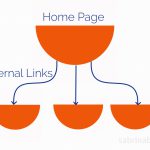Why are ad extensions important for users?
If I had to describe ad extensions in one sentence, it would be as follows: ad extensions enhance the user experience and engagement. Therefore, the extensions should be beneficial if they are provided:
Not only do the extensions display answers to users’ inquiries, but they also integrate their geographical information and give a user-friendly experience.
As a personal customer, you may find it annoying if you search Google for a local business that offers sports watches with waterproof and shock-resistant capabilities but are unable to discover any results. Here, extensions might be helpful. By providing several brands of sports watches with the appropriate features and locations, extensions may simplify your search and reduce your frustration. So, the purpose of extensions is to make it simpler for customers like you to locate the items and services you need.
Increased user engagement with search results due to the aesthetically pleasing presentation leads to more quality leads.
Different extensions
1/ Sitelinks
Sitelinks are not headlining links but rather send viewers to particular sites relevant to the ad, which may enhance the average click-through rate (CTR), increase conversions, and save the effort required to create unique bids or keywords. Additionally, sitelinks increase brand recognition. The tactics associated with sitelinks include adding as many sitelinks as possible, with a minimum of two; linking to a highly relevant landing page; and describing what readers will read on the landing page.
2/ Callout extensions
Callout extensions are 25-character text (in certain languages, just 12 characters are permitted) that should emphasise your company’s value. Google conducted studies that showed a 10% boost in CTR when using callout extensions. This expansion also increases brand recognition and generates sales and conversions. The rules are that extensions must be concise, compelling, and concrete, using bullet point content rather than a whole sentence; sentence case is preferred over title case.
3/Structured snippets
This extension should provide features unique to your organisation that boost leads. This section should include details such as the amenities of rental homes, the kind of shoes, and retail locations. This section of the advertisement should provide crucial and pertinent information.
The above three are universal extensions. The distinction between structured snippets and callouts is that the former refers to particular parts of goods or services, whilst the latter refers to a differentiated business.
4/ Location extensions
Include your business’s address, phone number, and a map marker in this extension. On mobile devices, in particular, a URL links to your company. This genuine location may assist visitors in identifying a local store, raising their trust in purchasing, boosting your business’s exposure online, and recording shop visits. Need to highlight that employing location extensions will improve a 10% CTR, but only when you have physical locations. Tips regarding this portion are that you must utilise your GMB(Google My Business) account to update your location and use the Advanced location settings to ensure prospective clients see your advertisements.
5/ Affiliate location extensions
This extension is appropriate for organisations with affiliated firms or retail partners. For instance, gym franchises may use this service. The viewer may see his local gym shop when watching the ad.
6/ Call extensions
This extension aims to generate more calls since it makes it easier for consumers to contact you, resulting in a higher response rate and more leads. And you may plan the calling time to coincide with your business’s operating hours. But make sure phone calls are beneficial for your company; otherwise, don’t activate this extension. Tips concerning this extension are: examining phone call conversions in reports and discovering which is most successful; having employees educated for call service.
Structured snippets, callouts, and location extensions are suitable to be shown with call-only advertisements.
7/ App extensions
This is appropriate for companies having Apps since it increases the app’s exposure and installation. It is the only approach to ensure a keyword-based app impression. The link in the headline should connect to the website, while the link in the app extension should direct to the app store. Do not include a link to the app store in your headline; Implement the extension to serve both brand and generic keywords; Don’t restrict the extension to mobile app downloads, but the opportunity to link to the website.
8/ Price extensions
Companies that provide items and services with the corresponding pricing may use this extension. Google now supports up to 24 languages and currencies. It provides a positive client experience by providing transparent pricing and comparing options. The content of this page should be granular and related to the headers. Avoid promotional language and avoid repetition.
9/ Promotion extensions
It is a wonderful technique to promote without introducing a new advertisement. They are shown underneath the advertisement and provide a discount or others. You may prepopulate the promotion for particular holidays or events, and you can arrange your promotion time or day with flexibility.
10/ Message extensions
This only supports mobile text formats. When phone calls are unavailable, it is simple to inquire about items or prices. It is an excellent method for generating leads. However, companies only use this extension if they have a text-based system to answer through email, SMS, or phone. Tips for this section include providing clear action directions, such as ‘text us to get a discount’ ; scheduling your extensions to inform consumers when answers are available, and responding professionally and promptly.
Rule of thumb for extensions
Use as many extensions as feasible, but only if absolutely necessary. Typically, three to four is the bare minimum. Utilize sitelinks, structured snippets, and callouts at all times. Continually update your advertisements and often analyse the efficacy of ad extensions.
Automated advertisement extensions
If you manually build extensions or have not made any, Google Ads may develop extensions automatically if the technology forecasts that they would generate more leads and enhance performance.
However, what extensions does Google produce?
Dynamic sitelinks. Available in both single- and double-line forms. Typically, two to six sitelinks might be shown alongside an advertisement.
Dynamic structured snippets. They are featured in automatically surface useful, organised custom information and non-clickable text in the deader. They may appear at any Google Search position. The minimum number is two, and there is no maximum.
Dynamic callout extensions. Google builds them based on your website’s content or keywords. Up to six callouts may be shown.
Though the dynamic extensions are beneficial, your manual creation ones are more significant.
How to view the performance of automated extensions?
On the ‘All campaigns’ page, click ‘Ads & extensions’, then the ‘Automated Extensions’ tab. You can view your ad’s clicks, impressions and other data.
Where are the Google Seller Ratings from?
Have you ever noticed online shops with seller ratings? You can create star ratings for shops in several ways.
Google Customer Reviews (GCR). It is a free service from Google Customer Reviews.
Stella Service. Scores are from an independent company for certain online businesses.
Google-led shopping research. It’s from Google’s evaluation of certain online service performance.
Google Consumer Surveys. This is a Google platform survey for certain domains and businesses.
Third-Party Review sites. They aggregate user reviews.





Leave a Reply
You must be logged in to post a comment.